In Salerno, you stroll along narrow streets topped with picturesque arches and houses where ancient Roman columns peep out here and there. You can enter sumptuous churches shaped by art and time and eat a brioche with ice cream while gazing at the waterfront.
In Corso Vittorio Emanuele, the long 19th-century avenue, you are welcomed with thousand of artistic lights during the acclaimed Luci d'Artista, the Chrismas event held yearly between November and January, among the most beautiful Christmas Lights in Italy. And the tree-lined seafront promenade wants you to walk (or run) having the word 'wow' in your mind.
And then what? Here's what to do in Salerno to discover Campania's second city just like a true local.

What to do in Salerno like a local
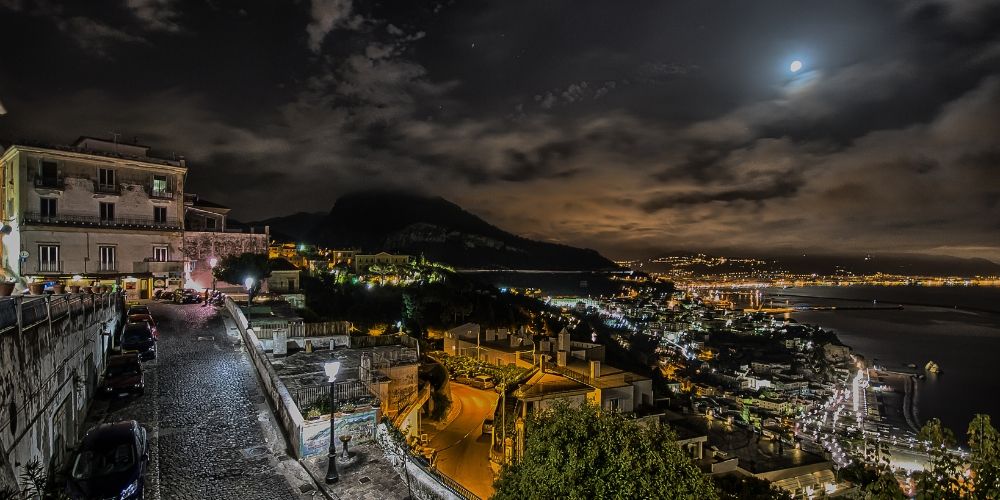
You can reach the centre of Salerno in about thirty minutes by train from Naples. Once in the centro storico, you'll find a pleasant and lively city that, year after year, becomes increasingly attractive to tourists. And not only because of its geographical proximity to the Amalfi Coast and Cilento.
Salerno is culturally vibrant, with many initiatives, festivals and events enlivening it, such as the Festa di San Matteo, Salerno Letteratura and the Film Festival.
A place where the incursions of international archistars blend into an urban layout that has been able to renew and enhance itself thanks to a courageous urban-regeneration program.
A few days is enough to appreciate and be pleasantly surprised by the unusual charm of this ancient city projecting unto the future.
Discover what to do in Salerno like a local.
10. What to do in Salerno like a local: taste stuffed spleen
The Feast of St Matthew is an institution for Salerno. The city's patron has its own pompous celebrations on 21 September.
The festa is a great collective ritual for the community, with loads of people taking part in the procession through the historic centre to the magnificent Duomo, probably one of the most beautiful places of worship in the whole of Campania.
Like any self-respecting patron saint's celebration, St Matthew's comes with a riot of sounds, colours and scents. One, in particular, stands out among the stalls and cheerful crowd: the smell of vinegar used to prepare stuffed spleen, 'la meveza 'mbuttunata', as the Salernitani call it.
Tasting this typical dish served in a sandwich is undoubtedly one of the things to do in Salerno like a local. Its 'ancient' and pungent flavour may turn some noses up. However, we are confident that our readers will appreciate it!
9. Photographing Rione Fornelle
Salerno's oldest neighbourhood is also one of the city's most modern and exciting artistic spots. Giving new life to this working-class district is an initiative entitled Muri d'Artista (Artist Walls).
Narrow streets, facades worn down by saltiness, and laundry flattering from balconies frame words and images that speak the language of poetry.
Street art has the merit of giving new charm and an international outlook to an area long considered to avoid and certainly not very touristy, even though being a short distance from the Verdi theatre and the Villa Comunale.
Among the murals are the poems of Alfonso Gatto, Salerno's beloved poet, the tributes to Campania's most celebrated artists, and many references to the essential element of this land: the sea.
After exploring Rione Fornelle, you can take the lift to the upper part of the city and reach a true gem in Salerno. Find out the place in the next chapter.
8. Strolling through the garden of Minerva
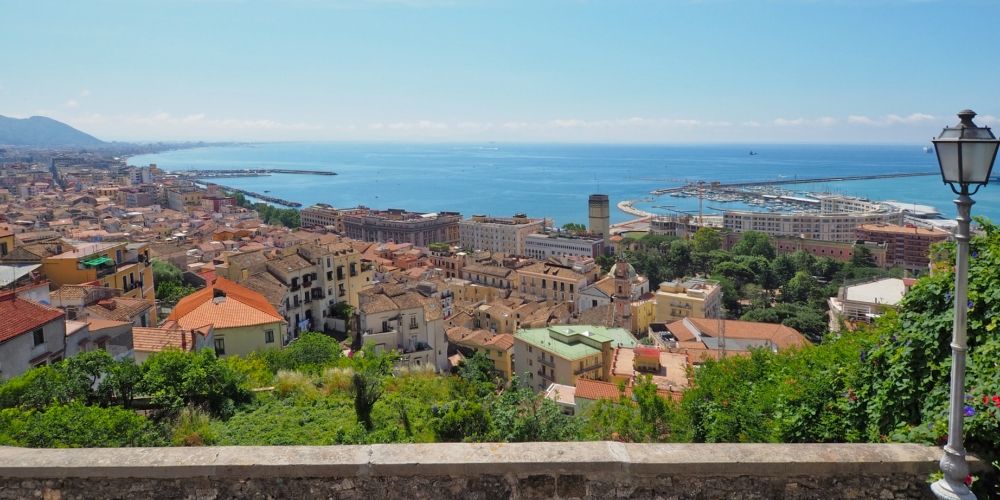
One of the things to do in Salerno like a local is a stroll through the place that is its pride and joy. The Giardino della Minerva is one of the oldest botanical gardens in Europe. For a small fee, you can discover a green and peaceful slice of the city's history.
This small corner of nature is located in the ancient heart of Salerno and dates back to the 12th century. In the past, the Schola Medica Salernitana used it to produce plants for therapeutic purposes. Even today, over three hundred botanical species are cultivated here.
Visit it for a peaceful walk among its five terraces and take the opportunity to admire the splendid view over the gulf and sip a drink at the table of the delicious herbal tea shop.
7. Entering an oyster

The futuristic maritime station of Molo Manfredi has, precisely, the shape of an oyster. It's one of the last projects realised in Italy by Zaha Hadid, the brilliant Anglo-Iraqi designer who died in 2016.
The unusual building is a symbol of Salerno's urban renewal and has helped reshape its already enchanting waterfront. A spectacle that gets even more fascinating in the evening when the peculiar undulating roof covered with ceramic tiles lights up with hundreds of shining LEDs.
The terminal has pedestrian access to the waterfront and the brand-new Piazza della Libertà, Italy's largest square by the sea.
6. Discover the hidden treasures of Via Massuccio Salernitano
Known to Salerno residents as Vicolo dei Caciocavalli (from the renowned south Italy cheese), this narrow street in the centro storico has a very special atmosphere. Via Masuccio Salernitano connects Piazza Sedile di Portanova to Piazza Flavio Gioia, a square famous as La Rotonda.
The alley follows the route of the ancient medieval walls. When Arechi II started extending the city boundaries, new terraced houses sprung up right on this site.
As you reach the widest point, start looking around more carefully to catch what remains of the ancient church of Santa Maria De Domno: a high arch overlooking the alley and a bell tower.
Via Masuccio Salernitano is close to the ancient Jewish ghetto, Vicolo Giudaica, an area is rich in small wonders. A short distance away, Vicolo della Neve is another enchanting corners and features poetic tributes to the illustrious fellow citizen Alfonso Gatto.
5. Seeking the most beautiful views of Salerno
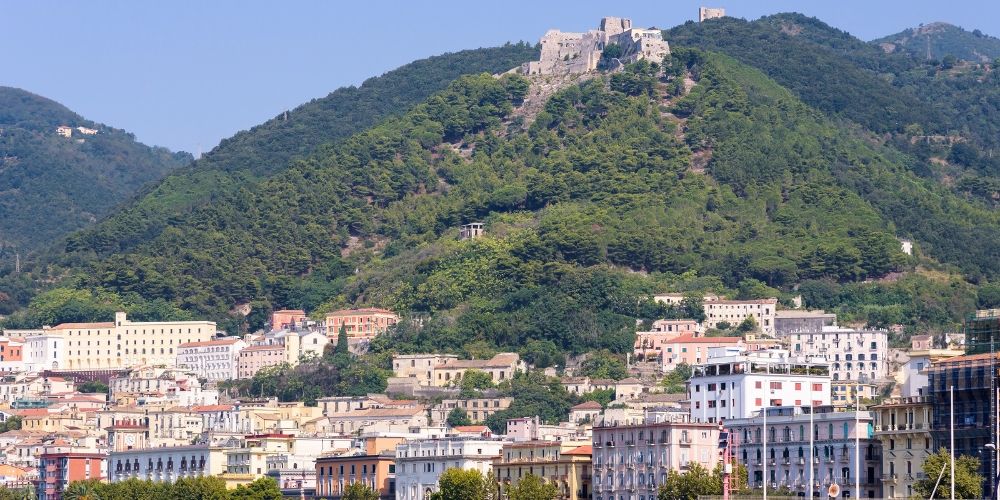
Even better if with your special one. Salerno features many spots where to look at the sea is to fall in love (with someone or even just with the view).
The specific place we want to suggest offers the cue for an easy but highly suggestive excursion a stone's throw from the historic centre. Ugo Foscolo, the Italian writer, was so impressed that he chose it as the setting for his Ricciarda, a tragedy from 1813.
To find this landmark, you have to reach the impressive Castello di Arechi, on Mount Bonadies. You get there by bus or even walking if the steep slope doesn't seem so frightening. The road crosses the maquis and is very scenic.
The castle's courtyard has a restaurant and a bar where to take a break while admiring the beautiful coastal view.
The Longobard complex houses the Medieval Museum with a rich collection of arms, ceramics and coins found near the castle.
4. Entering the house of a popular fictional character
Vincenzo Malinconico is the protagonist of a series of popular novels by Diego De Silva, with Salerno as a romantic and veracious set. Its successful television adaptation features the city's most famous and iconic landmarks as a backdrop: Villa Comunale, the Crescent, Palazzo di Giustizia or Palazzo Sant'Agostino.
Nevertheless, there is another spot probably less well known than those just mentioned but which hides a great deal of charm and beauty.
It's a refined 18th-century residence at number 27 Via Trotula de Ruggiero. Palazzo Copeta rises on the slopes of Mount Bonadies and nobly observes the city and its sea from above.
TV writers chose the palace as Malinconico's home. In reality, the large Rococo building, rich in stucco and decorations in contrasting colours, used to be one of the last seats of the prestigious Schola Medica Salernitana.
It's a piece of Salerno's history dating back to the reconstruction following the 17th-century earthquake. Reach it to rediscover a little-known gem of Campania architecture.
3. Legends and panoramas
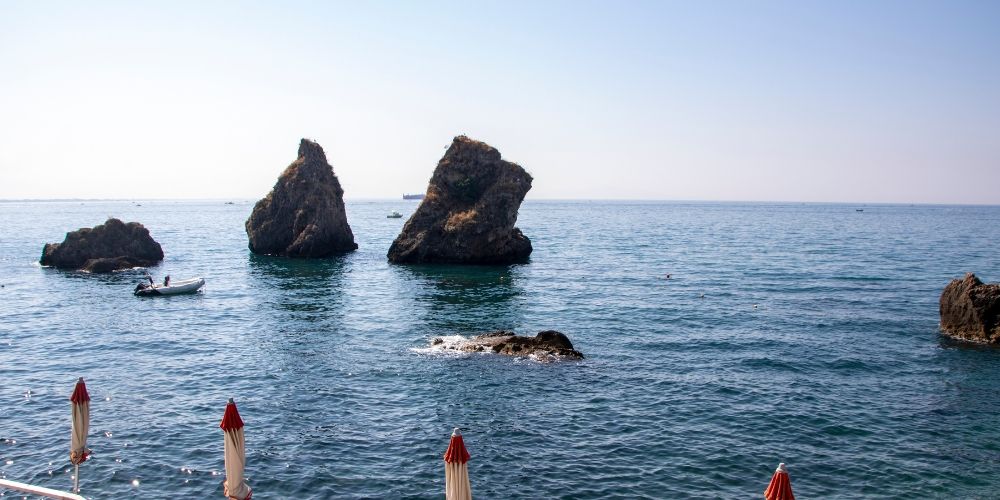
On the horizon of Salerno lies a sea of legends. The Mediterranean has woven extraordinary stories at these latitudes, where facts and rumours blend with real events and fairy tales.
The Salernitani have passed down these legends for generations, and one of the most famous is about a corner of the Amalfi Coast, which you might glimpse from the ferry as you sail towards nearby destinations or on a boat during a summer excursion.
It's a rock formation known as Due Fratelli (two brothers). These two large rocks are so similar that they seem like twin boulders rising off the coast of Vietri sul Mare.
Due Fratelli's fame is mysterious and romantic, with two legends arising around them. One tells of a knightly duel, while the other is based on an ancient Greek myth. Anyway, both versions revolve around the death of two brothers.
Finding more about them in Salerno will be fun and stimulating; you won't have trouble finding some locals to ask about the lore and hear their personal versions.
Visit the Amalfi coast2. Stopping at number 67 of Via dei Mercanti
As you stroll down Via dei Mercanti, you'll arrive at number 67 - a significant address in Salerno's history. Here is why it's so special to the locals.
This street has been the centre of the city's commerce for ages, and the name itself suggests the presence of artisan shops and stores since ancient times.
Back in the day, this cobbled road went by the name Via Drapperia, which gives a clue about the primary activity of the merchants who occupied the area - the sale of fabrics.
With people streaming in since the Middle Ages, the area soon became one of the most popular and frequented in Salerno. The large influx of individuals and the increasing economic importance of the neighbourhood led to the birth of several religious buildings in the vicinity, such as the ancient church of the Crocifisso.
As you walk down the street, be sure to keep an eye out for the plaque above the portal at number 67. It's a dear address to the locals, especially football enthusiasts. In fact, it was here that the Salernitana football team was founded on the evening of June 19, 1919.
1. Visiting the village “dell’amore”

Salerno opens its doors to the naturalistic, historical, and gastronomic opulence of Cilento, a UNESCO heritage site. One of the hidden gems of this region, which is full of surprises, is a small borgo about a thirty-minute drive from its capital.
It's called Trentinara and is known as the village of bread and love. The oldest part, San Nicola, is a tangle of cobbled streets, stone houses, and ancient bakeries. At the end of August, it becomes the setting for a festival that smells of ancient times, entirely dedicated to the local culinary speciality: the Festival of Bread and Peasant Civilization.
From the historic centre, you can get to a beautiful panoramic terrace overlooking the Sele plain, which embraces the archaeological park of Paestum, the Gulf of Salerno, and Capri.
To reach the belvedere, you walk along the romantic Via dell'Amore, a road lined with tiles bearing some verses of poetry. The path leads to the so-called "petra 'ncatenata," a legendary symbol linked to an impossible love.
According to the legend, Saul and Isabella, the local Romeo and Juliet, were a brigand and a marquise deeply in love. However, since Isabella came from a wealthy family, they were not allowed to be together. To avoid being separated, they chose to jump off a particular rocky formation, which consists of two large boulders that appear chained to each other.
Looking for an adrenaline rush? In that case, the Cilento zipline flight might be just what you need. This thrilling experience allows you to soar above the picturesque scenery suspended along a steel cable at an altitude of 1600 meters. And, if you're feeling romantic, you can even take this adventure as a couple!
Find more about Trentinara ziplineAbout the author
Written on 13/11/2023


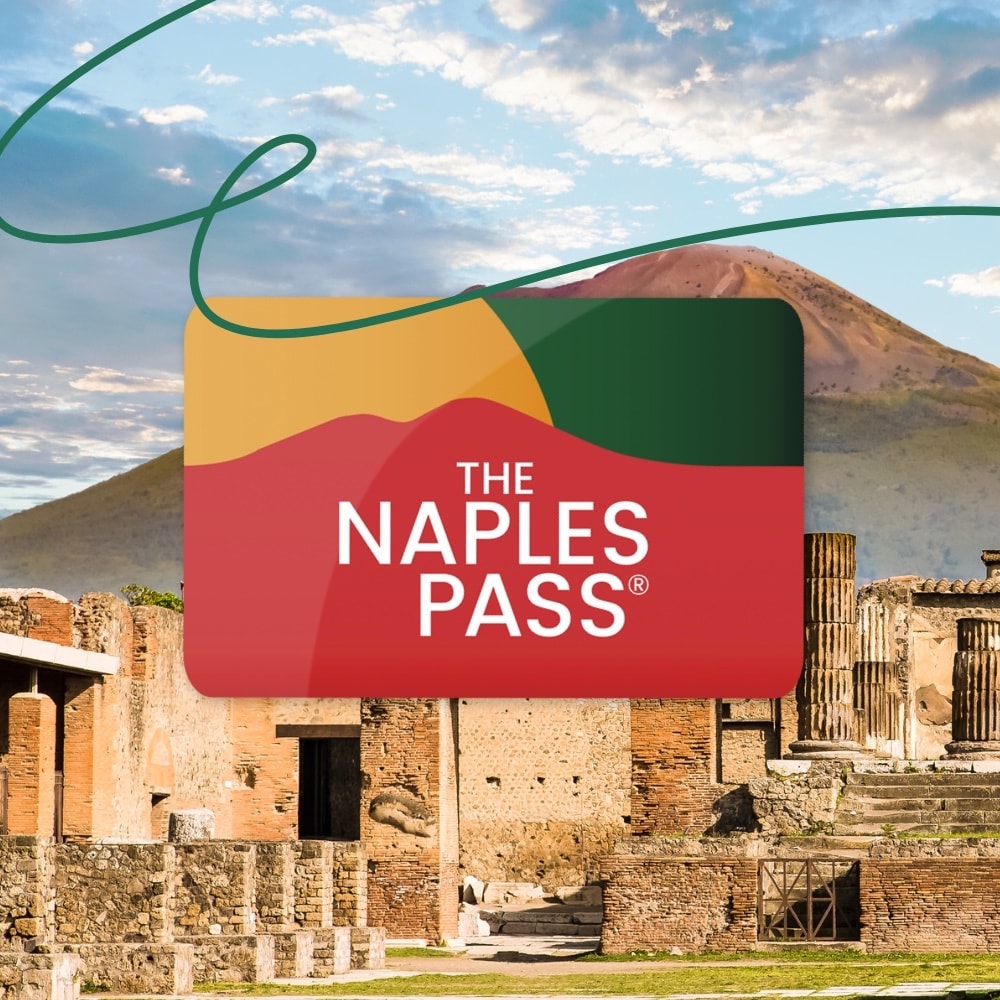
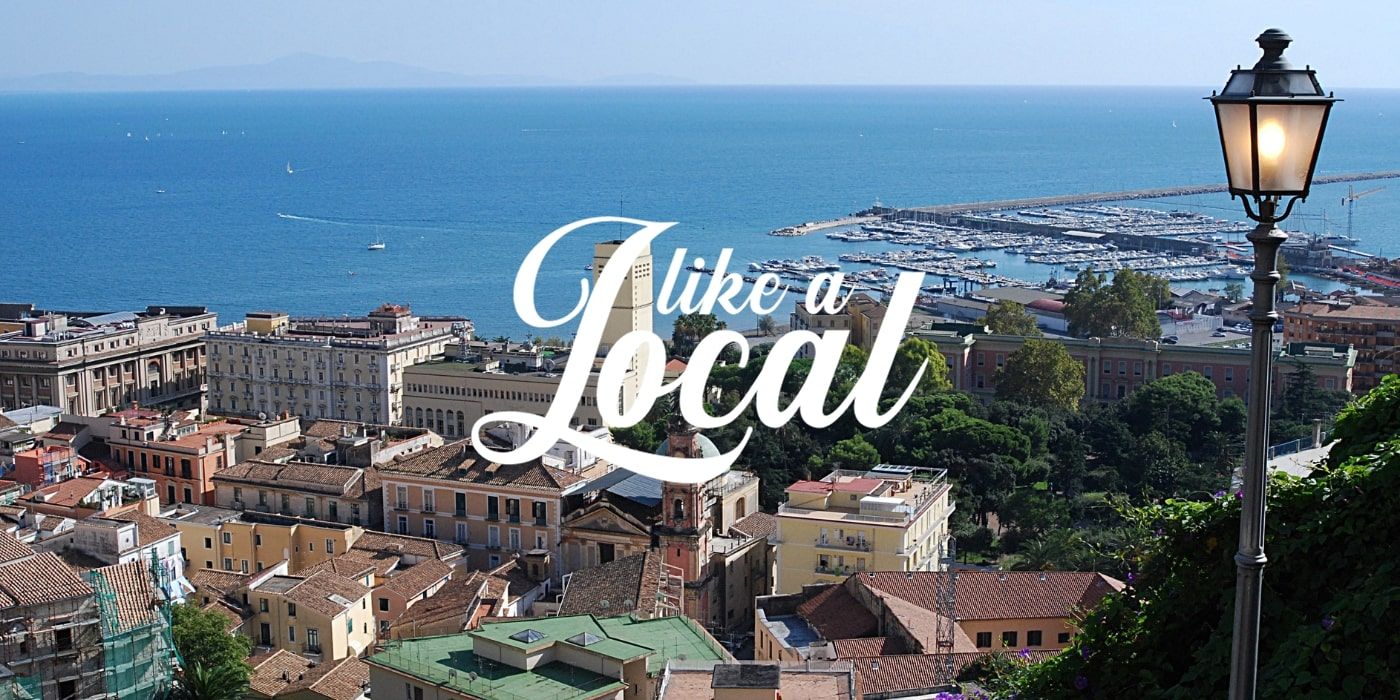
Lorena Calise
Campania's second city is waiting for you: discover what to do in Salerno like a local with our tips.